Capsule Review: EVGA GeForce GTX 780 Superclocked ACX
by Ryan Smith on September 22, 2013 12:00 PM EST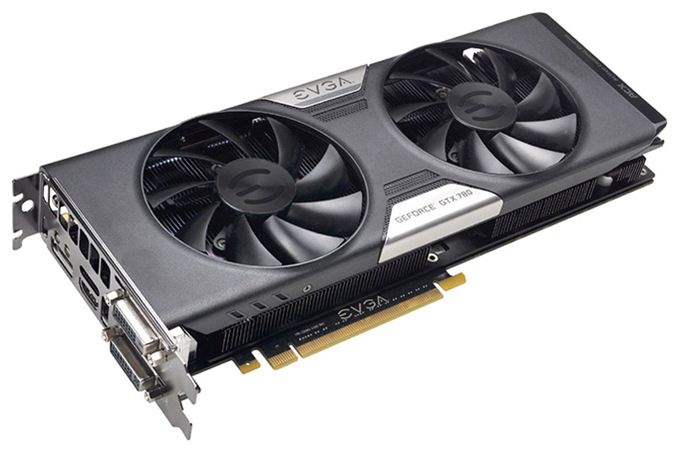
Looking at the launch of the GeForce GTX 780 in retrospect, one of the more unusual aspects of the 780 was just how close NVIDIA let their lower-tier GK110 card get to the upper-tier GTX Titan. GTX 780 was able to deliver 90% of GTX Titan’s performance, but did so at just 65% of the price of GTX Titan.
Now a 10% performance gap is a fairly common gap for high-end NVIDIA cards. The price gap on the other hand is clearly wider than normal. For example, in the last generation the GTX 680 and GTX 670 were separated by roughly the same performance gap, but the GTX 670 came in at 80% the price of the GTX 680, not 65%. Ultimately NVIDIA’s “prosumer” positioning made Titan a very expensive card for gaming, with the end result being that the more strictly gaming focused GTX 780 could deliver very similar performance at a much lower price tag.
But the more interesting outcome of this performance/price disparity is how easy it is to close the performance gap against the much more expensive GTX Titan through overclocking. In the big picture 10% between tiers is almost nothing, and as we’ve already seen GTX 780 can more than make up that last 10% in overclocking. NVIDIA’s partners are of course well aware of this fact, and as the partners traditionally do, factory overclocked cards were a foregone conclusion. And with such a narrow gap between GTX 780 and GTX Titan, those factory overclocked cards should have little trouble matching GTX Titan.
Today we’re taking a quick look at one of those cards, EVGA’s GeForce GTX 780 Superclocked ACX. The 780SC ACX is a fairly traditional card for EVGA, filling in as the company’s standard first-tier factory overclocked card. With the GTX 780 Superclocked EVGA has rolled out two variations of this card, the first variation being an overclocked version of the reference card, and the latter being a semi-custom design with the company’s new ACX cooler.
| GTX Titan | EVGA GTX 780SC ACX | GTX 780 | GTX 770 | |
| Stream Processors | 2688 | 2304 | 2304 | 1536 |
| Texture Units | 224 | 192 | 192 | 128 |
| ROPs | 48 | 48 | 48 | 32 |
| Core Clock | 837MHz | 967MHz | 863MHz | 1046Mhz |
| Boost Clock | 876Mhz | 1020Mhz | 900Mhz | 1085MHz |
| Memory Clock | 6GHz GDDR5 | 6GHz GDDR5 | 6GHz GDDR5 | 7GHz GDDR5 |
| Memory Bus Width | 384-bit | 384-bit | 384-bit | 256-bit |
| VRAM | 6GB | 3GB | 3GB | 2GB |
| FP64 | 1/3 FP32 | 1/24 FP32 | 1/24 FP32 | 1/24 FP32 |
| TDP | 250W | 250W | 250W | 230W |
| Transistor Count | 7.1B | 7.1B | 7.1B | 3.5B |
| Manufacturing Process | TSMC 28nm | TSMC 28nm | TSMC 28nm | TSMC 28nm |
| MSRP | $999 | $659 | $649 | $399 |
Touching briefly upon the specifications of the 780SC ACX, the card is a fairly by-the-books factory overclock. EVGA has jumped the core clock from the GTX 780’s standard 863MHz to 967MHz, a 104MHz (12%) core clock increase. The official boost clock grows by even more – 120Mhz over reference – to 1020MHz. Memory clockspeeds on the other hand remain unchanged, leaving the card at 6GHz, making this a somewhat unbalanced overclock. However it's also one that’s largely tempered by the fact that the 384-bit wide memory bus of the GTX 780 provides plenty of bandwidth; after all this is the same amount of memory bandwidth GTX Titan has in the first place. The end result is that with few games being memory bandwidth limited, the 780SC ACX should scale nicely with clockspeeds.
EVGA’s design is a semi-custom design, pairing a standard reference board with their ACX cooler. Getting to the cooler momentarily, the board is otherwise unremarkable compared to other GTX 780s. The same voltage and power limitations apply here, so next to the factory overclock itself the biggest gains for the 780SC ACX come from the customary binning and reprogramming these cards go through. This means that the 780SC ACX runs at higher clockspeeds for any given voltage on the curve, improving performance without significantly increasing power consumption.
Moving on we have EVGA’s new ACX cooler, which is as much the star of the show for today’s review as the factory overclock itself is. EVGA isn’t a stranger to custom coolers, but their strongest hands have traditionally been their superbly supported reference cards, and their niche-in-a-niche products such as their Hydro Copper cards with pre-installed waterblocks or their extremely high-end Classified cards, neither of which is quite as mass market. EVGA has also offered alternative coolers at various points, but never as a principle product line.
However with their ACX cooler EVGA is looking to change that by branching to what’s loosely defined as the “branded custom cooler” market. This is a market which has seen the likes of Gigabyte, MSI, and others make a solid name for themselves by offering semi-custom and custom cards with branded coolers such as their respective Windforce and Twin Frozr coolers. Custom coolers are obviously by no means new, but the branding and reuse of the basic designs of these coolers have allowed the partners to make their coolers signature products for their respective brands in order to better stand out against both reference designs and competitors cards. Invariably open air coolers in design, these coolers offer a fairly well understood alternative to the blower designs most high-end reference coolers use, ultimately allowing partners to serve the preferences of buyers at both ends of the spectrum.
With that in mind, EVGA’s ACX cooler is a fairly typical entry for the custom cooler market, being based in principle in a twin fan open air cooler. This means we’re looking at a three part design: a baseplate for rigidity and heatsinking of smaller components, a heatsink that runs nearly the entire length of the card and is attached to the GPU via five aluminum heatpipes and an aluminum baseplate, and finally a pair of 90mm fans to provide airflow over the entire card. All in all it’s a common design principle for high end cards these days – thanks in large part due to the laws of physics – but it’s a common design that has proven to work well and makes some very straightforward and well understood tradeoffs in cooling performance versus noise. An open air cooler should deliver equal or better temperatures at lower noise levels, at the cost of shoving more of the cooling workload onto the chassis itself.
Meanwhile, though the basic design principles of the ACX cooler may be common, EVGA has a lot of latitude when it comes to construction, and this is where they’re hoping to separate themselves in the crowded field of branded custom coolers by building a better twin fan cooler. EVGA’s “secret sauce” here is largely in the design of their fans, with EVGA taking care to point out the design choices they made for both the blades and the motors. With respect to the blades EVGA says they’re using blades that are both stronger and lighter than what we typically see, though we don’t have the data the confirm this.
What should be more significant is EVGA’s use of ball bearings in the fan motors. Ball bearing fans are no more a breakthrough than twin fan coolers, however bearings are a seldom promoted item and as a result we rarely know what type of bearings are in use or when manufacturers switch between the bearing types. So consistently using ball bearings on all of their ACX coolers is if nothing else a promotional point for EVGA, as they’re a more expensive/premium option than sleeve bearings. Mechanically speaking, compared to sleeve bearings, ball bearings typically have greater longevity and a bit less noise under heavy load, in exchange for a bit more noise at idle, making them a good tradeoff for a high-end card. From a practical point of view the longer lifespan of ball bearings will be the greatest gain out of this, while any noise tradeoffs are secondary as the fan itself will usually be the greater factor. Of course EVGA’s specific numbers aren’t something we can validate, but the general benefits are fairly straightforward.
Moving on, as a semi-custom card the 780SC ACX is otherwise identical to the reference GTX 780. This means it has the standard NVIDIA display I/O configuration of 2x DL-DVI, 1x HDMI, 1x DisplayPort 1.2, and the same 10.5” length. Even the official TDP is the same at 250W, though as we’ll see in our testing there is a slight increase in power consumption at the wall.
Rounding out the package is EVGA’s usual collection of software and hardware accessories, including a pair of PCIe power adapters and a DVI to VGA adapter. As far as EVGA’s software goes there’s little to be said that we haven’t said before: EVGA still shares the gold standard for software, with their fantastic Precision X overclocking utility and their OC Scanner X artifact scanning utility.
Meanwhile, as with all of EVGA’s North American cards, the 780SC ACX comes with EVGA’s standard 3 year transferable warranty, with individual 2 or 7 year extensions available for purchase upon registration, which will also unlock access to EVGA’s step-up upgrade program. Finally, the MSRP on the card is $659, only $10 above the MSRP for the standard GTX 780. Though GTX 780 base pricing is by no means cheap, as we’ll see in our benchmarks $10 (2%) more for a 12% overclock and Titan-like performance renders the stock GTX 780 redundant almost immediately.


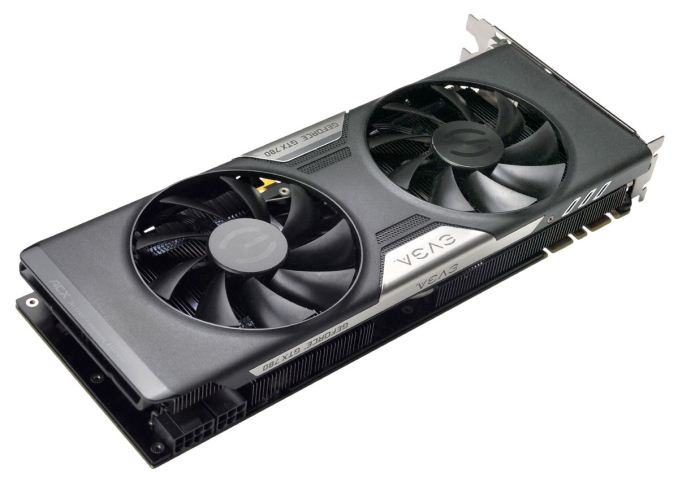






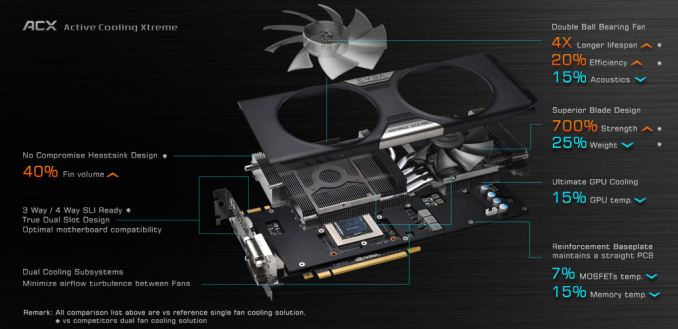






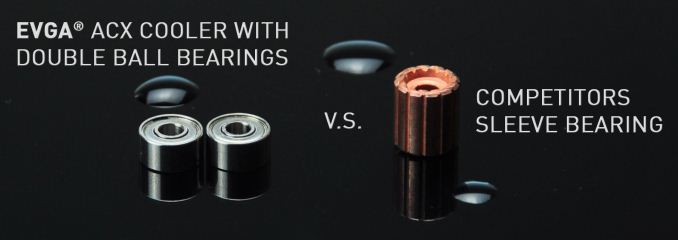
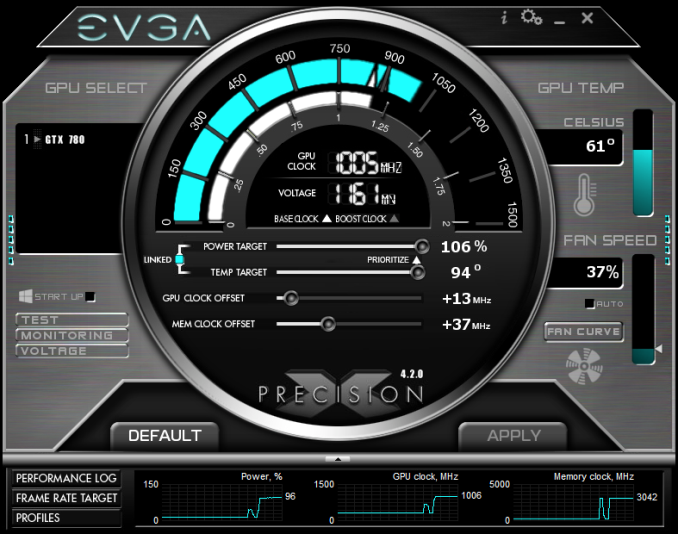








40 Comments
View All Comments
alkhanzi - Wednesday, September 25, 2013 - link
Comparing the above given benchmarks the 7990 is more than 20% faster in average than the 780 at 2560*1440. As of today in newegg the price is 620USD. So I will choose 20% more FPS and 20 USD less price 10 times out of 10 :)tackle70 - Wednesday, September 25, 2013 - link
The limited test suite here favors the 7990http://www.techpowerup.com/reviews/EVGA/GTX_780_SC...
GeorgeH - Monday, September 23, 2013 - link
The Titan is still incredibly relevant and important for Nvidia - for psychological reasons.The Titan at $1000 makes this card a "good deal". When Titan came out every review had a "but the price!" as a negative. If the Titan did not exist every 780 review would have the same caveat. Instead every 780 review has a "it's a great deal on a Titan" comment.
Intel does the same thing with its $1000 -X CPUs; the 4930K is a "good deal" on a 4960X. It's a sales technique widely used across all industries because it works incredibly well.
Bottom line Nvidia isn't marketing the Titan to "prosumers" or whatever else, they're marketing it to 780 customers.
colonelclaw - Tuesday, September 24, 2013 - link
I love Nvidia graphics cards, and have historically bought their top-of-the-range card every two generations, but this time out I think they've completely lost the plot on price. I remember thinking £350 here in the UK was an outrageous price when I bought my 580, but a 780 is now £500+ and it's not even their best single-GPU gaming card. Shouldn't the price stay pretty much the same for the top card across generations (inflation-adjusted)? Plotting a graph of performance increases per generation going back many generations pretty much shows the Titan should be branded the 780.I'd be interested to see their sales figures, but I can't imagine they're selling anything like as many 780s as they did 580s. And as for Titans, niche would have to be an understatement.
Jodiuh - Tuesday, September 24, 2013 - link
I don't know how you're testing this card or perhaps you got a VERY cherry picked card, but I load @ 77C and so does a friend's card. Also, this cooler is noisy. Your review conflicts heavily with xbit labs, hardware canucks, and what I've seen on two of these cards.tackle70 - Tuesday, September 24, 2013 - link
I have two of these in SLI, and they're dead silent - never louder than my NH-D14 CPU cooler. Top card never goes over 70C at stock settings. Guru3d, TPU, and others corroborate the noise results. The cooler is not noisy at all.rs2 - Tuesday, September 24, 2013 - link
Would anyone care to explain how those FP64 ratings work? Specifically the things like "1/3 FP32" and "1/24 FP32". Seems like gibberish to be, though I assume one is better than the other, by some amount that can be inferred by comparing the fractions?Oscarcharliezulu - Friday, September 27, 2013 - link
Give the card works within its thermal limits even under boost, can you underclock or reduce the base speed to make it even quieter and cooler when not gaming, but utilise full speed when playing a game? Do the utilities let you do that?jdietz - Tuesday, October 1, 2013 - link
Where do I go to see the test setup (CPU, etc...)?Laststop311 - Sunday, October 6, 2013 - link
All these cards basically have right about the same speed and frame rates. The all can overclock very close to one another. The only things that really matter are the cooling capability and the noise level. The quietest/coolest gtx 780 is either the Asus Direct CU II with the updated BIOS or the MSI Gamer N780. Going with one of these cards gives you the lowest temp to noise ratio which is really the only different things between these cards. Plus the MSI Gamer N780 is on the cheaper end of the scale.